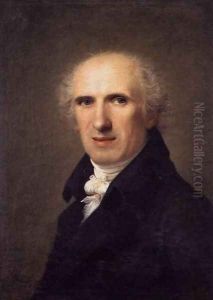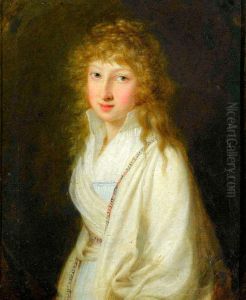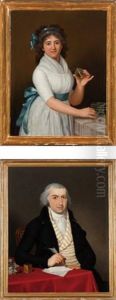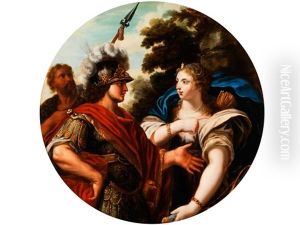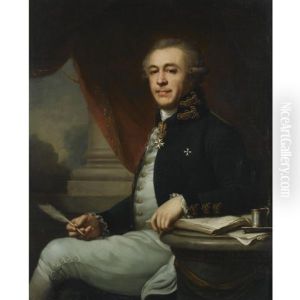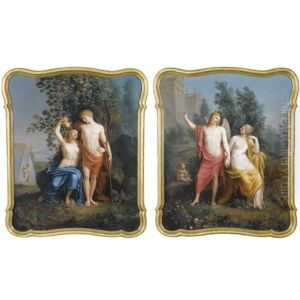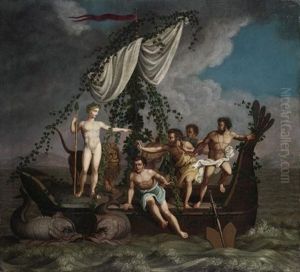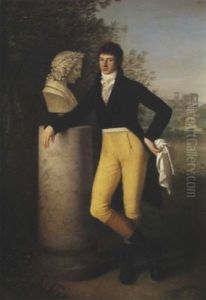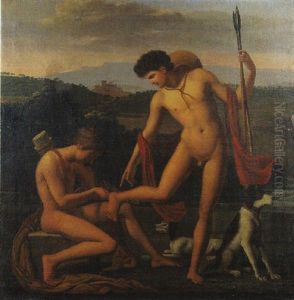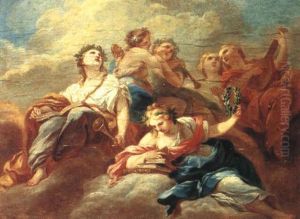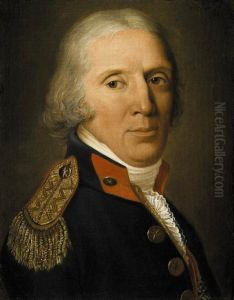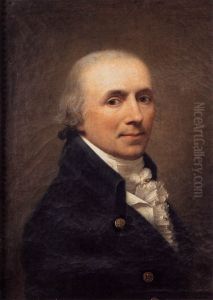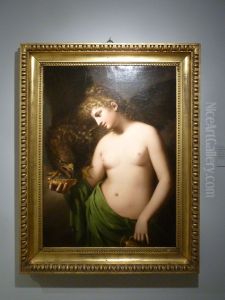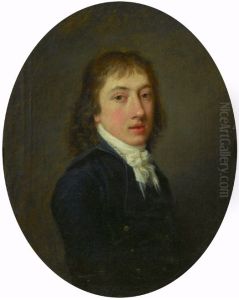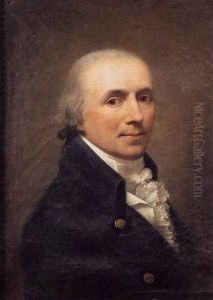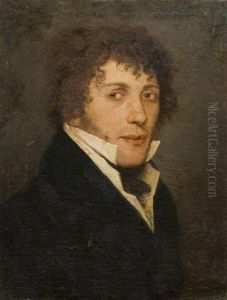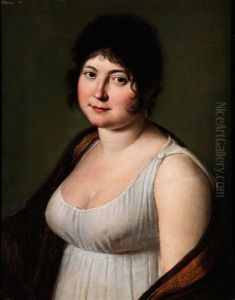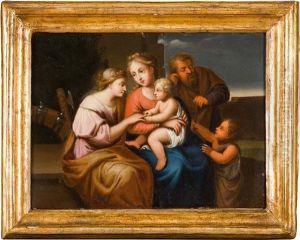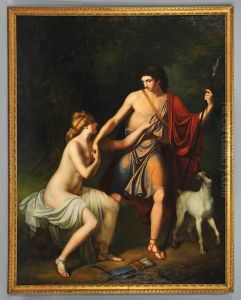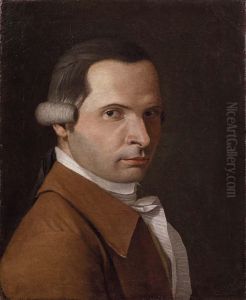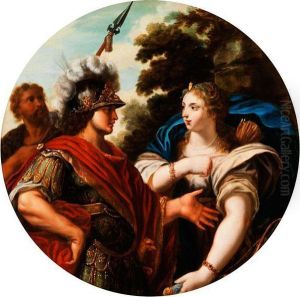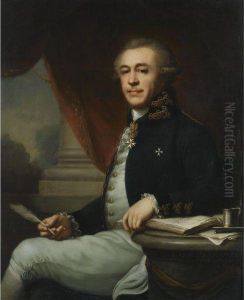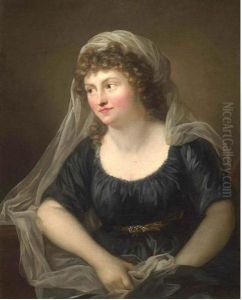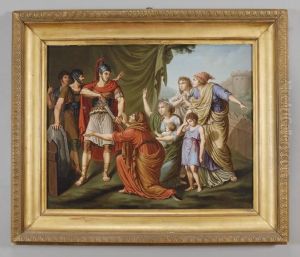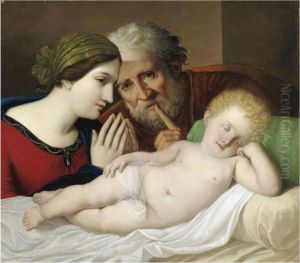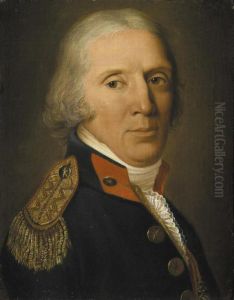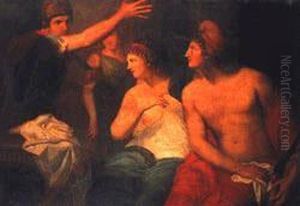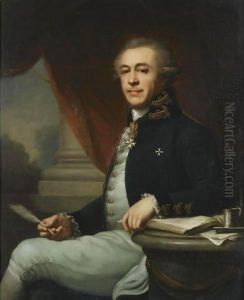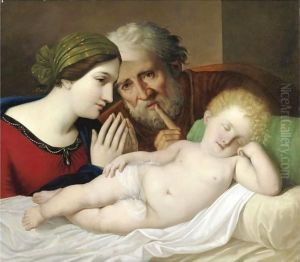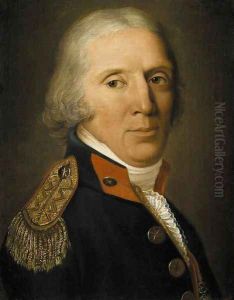Gaspare Landi Paintings
Gaspare Landi was an Italian painter born on January 8, 1756, in Piacenza, Duchy of Parma. He is recognized for his contributions to the Neoclassical movement, a period marked by a return to classical simplicity and grandeur in the arts. Landi showed an early inclination towards art, and his talent was nurtured under the guidance of Giovan Battista Borghesi, a local artist. His burgeoning skills earned him a scholarship to Rome, where he became a student at the Accademia di San Luca, and was heavily influenced by the classical style of Anton Raphael Mengs and the historical narratives of Pompeo Batoni.
During his time in Rome, Landi's reputation as a portraitist grew. He was celebrated for his ability to infuse classical elegance with psychological depth. His portraits of Italian nobility and clergy were particularly admired, earning him commissions from influential figures of his time. Despite his success with portraits, Landi did not confine himself to this genre. He also produced historical and religious paintings, which were characterized by their emotional intensity and adherence to Neoclassical principles of clarity and harmony.
In 1781, Landi returned to Piacenza, where he continued to work and contribute to the local art scene. His most significant commission during this period was the decoration of the dome of the Basilica of Santa Maria di Campagna in Piacenza, a project that showcased his mastery of large-scale religious compositions.
Landi's contributions to Italian art were recognized in his lifetime. He was appointed the director of the Accademia di Belle Arti in Piacenza and became a respected art educator. His teachings and works influenced a generation of Italian artists, bridging the late Baroque and early Neoclassical periods.
Gaspare Landi's legacy is preserved in his numerous portraits and religious paintings, which remain on display in galleries and churches across Italy. His work is celebrated for its elegance, emotional depth, and classical beauty. Landi passed away on February 28, 1830, in his hometown of Piacenza, leaving behind a significant impact on the evolution of Neoclassical art in Italy.
